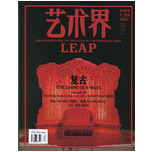2014-01-16 11:19
"Wang Anshi's Shanshui" originally emerged as an exhibition plan. This can be seen as a prequel to that exhibition.
The aim of this project is not, of course, to simply rehash old history, but rather to decipher the relation and interpretation of history through a contemporary lens, at the core of which remains the indelible issue of art and culture's relationship with politics. For practitioners of contemporary art, who labor within the confines of what has become the consensus on artistic creation in the public sphere, the arduous and thankless task of responding to and penetrating tradition, as well as its dialectical opposite that is the Western system, have become the starting point for our reflection.
"Wang Anshi's Shanshui" represents only one subjective proposition and perspective. It tries to get us to take a closer look at Chinese culture at its height-via the major transformations of the Northern Song. From the passionate participation of the educated elite in radical politics to the inward nature of philosophy and art at the time, these trends offer us background for comparison and reflection on today. Is it possible that today we can see a similar crisis-that of contemporary art, amidst all the cacophony that it has become, plummeting towards conservatism? This is particularly reflected as our aesthetic consumption is driven by the mechanisms of the market, and our belief systems, increasingly lack vitality and depth. One thousand years ago, just like today, the ideology of a formidable officialdom forced artists to distance themselves from political affairs. The greater this distance became, the less capable the artists were of fighting against the status quo. And the less capable they were, the less interested they became... But, just like today, the artists should seek to close this distance, no matter how futile their efforts may seem.
All of the illustrations show the classical painting of the era in question. The fonts and their arrangement, meanwhile, draw on Dadaism and Soviet constructivism as well as the Bauhaus style they would later influence. Naturally, this touches upon another history of art's dance with politics.
Related Artists: SHI QING 石青


